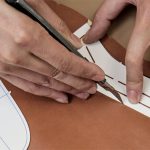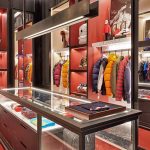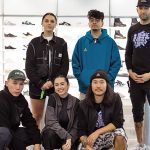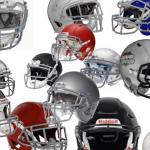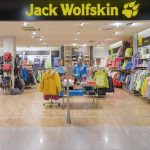“The Eastern states welcomed their first heavy snowfall in February prompting specialty retailers to capitalize by dropping retail prices. Sales in the Rockies and much of the West continued to thrive and helped offset the early season declines in the rest of the country,” said Christine Martinez, market research manager for SnowSports Industries America. New for this season, the SIA Retail Audit now tracks the Internet channel of distribution. For the August 2006 through February 2007 period, snowsport Internet sales totaled a significant $310 million. Total sales at specialty stores and via the Internet climbed to $2.0 billion for the August through February period.
Sales at specialty ski and snowboard shops were down 1% in dollars compared to last season. In dollars, that translates to $1.65 billion in sales compared to $1.67 billion in 2006. Unit sales were down from last season only 0.5%. The SIA Retail Audit, conducted by Leisure Trends Group, tracks and reports sales in all snow sports product categories. This is the fifth report of six that look at sales through March 31, 2007, the end of the winter season.
APPAREL CATEGORIES THRIVING THIS SEASON
Specialty apparel sales (including tops, bottoms, suits and snowboard) remained ahead 8% in dollars as compared to the same August through February period last year. By the end of February 2007, apparel sales had reached $578 million outselling equipment sales by $53 million. Last season at this time, equipment outsold apparel by $44 million.
Insulated parka sales rose 23% in dollars with sales reaching $173.2 million by the end of February 2007. Womens insulated parkas led the category with $84.8 million in sales outselling mens insulated parkas by $26 million (1.4 to 1 in units). At the end of February, 314,000 insulated parkas remained in specialty retail inventory, 7% more units than at the end of February 2006. Even with the increased inventory, sell-through stood at 74%, up from 72% at the end of February 2006.
Overall dollar sales of softshell parkas jumped 20% when comparing this period to the same period a year ago. From August through February 2007, softshell parkas earned $26.5 million in sales. At the end of February, softshell parkas were 69% sold-through, up from 68% at the end of last February.
In the insulated parka category, 59% of the adult units sold are womens. In softshells, the roles are reversed, with 63% of the sales going to men. While still small, the junior softshell parka category was up 32% in dollars.
Shell parkas declined 11% in dollars, reaching $44.6 million for the August through February period. Mens shell parkas, 61% of all adult shell units sold, decreased 7% while womens shell parkas fell 16% in dollars. At the end of February, shell parkas were 60% sold-through, even with the end of February 2006.
Vests (no fleece) and fleece (includes vests) continue to generate the increase in sales which began three seasons ago. Dollar sales were up for both categories, 19% and 31%, respectively, over last season. Fleece managed to bring in a total of $89.3 million in sales through February 2007. Sweaters bounced back after a slow season last year with a 9% dollar gain and $19.7 million in sales thus far this season.
Carryover top sales actually declined 37% in dollars. Through February, carryover accounted for 4% of all dollar sales, down from 6% last season.
Overall, alpine apparel tops grew 14% in dollars. Alpine bottoms, however, fell 2% in dollars, hurt by this seasons warm weather. All alpine bottoms were 69% sold-through at the end of February, down from 70% at the end of February 2006. Junior bottoms contributed a dollar gain of 11%. Softshell waist pant dollars increased 16%. Apparel suits continue to decline, dropping 25% in dollars.
Snowboard apparel sales dipped 2% in dollars reaching $88.3 million in sales by the end of February 2007. At the end of February, the category was 68% sold-through (compared to 65% last year) with approximately 331,000 units remaining in specialty store retail.
Snowboard tops are showing promise this period over last, up 4%. Womens snowboard tops increased 15% in dollars over last season for the same period and grew from 30% of all top dollars sold to 33%. Junior snowboard top dollars increased 15% over last season.
SALES OF APPAREL ACCESSORIES AHEAD OVER LAST SEASON
The accessories category in specialty stores declined 1% in dollars and grew to $544.4 million by the end of February 2007. The apparel accessories category saw sales increase 3% over the same period last year, reaching a total of $318.4 million by the end of February 2007. Turtlenecks (up 2%), headwear (up 7%), neck gaiters (up 15%), winter boots (up 8%), gloves (up 3%) and mitts (up 4%) experienced dollar increases in their respective categories.
Equipment accessory sales declined 6% with considerable declines in dollar sales coming from sunglasses (down 21%) and snowshoes (down 31%).
ALL MOUNTAIN BOARDS CONTINUE TO SHOW GROWTH
From August through February 2007, snowboard equipment sales (including snowboards, boots and bindings) were down 14% in dollars with sales reaching a total of $170.7 million. Snowboards (down 12% totaling $79.3 million in sales), boots (down 17% totaling $47.8 million) and bindings (down 13% totaling $43.6 million) all experienced dollar decreases this season over last.
All mountain boards jumped 31% in dollar sales reaching $11.0 million in sales by the end of February 2007. All mountain boards accounted for 14% of all snowboard dollars sold (up from 9% last season at this time). Freestyle boards, the largest category, accounting for 45% of the units and 48% of the snowboard dollars, fell 11% in dollars while freeride boards dropped 26% in dollars. Last season at this time, freeride boards accounted for 39% of all snowboard dollars; this season just 32%.
Carryover snowboard sales jumped 38% in dollars and increased their share of the market from 5% of the units to 8%. Even with the big increases, carryover still accounted for just 5% of the dollars.
At the end of February, 183,000 snowboards remained in specialty retail inventory and were 61% sold-through as compared to 64% sold-through at the end of February 2006.
Snowboard boots were 57% sold-through at the end of February, down from 62% at the end of February 2006. Snowboard boot carryover sales more than doubled this season. Carryover went from 4% of all boot units sold last season at this time to 10% this season-to-date.
Through February, carryover bindings climbed 34% and accounted for 7% of all units sold (up from 3%). At the end of February, all snowboard bindings were 60% sold-through, down from 67% at the end of February 2006.
CARRYOVER SALES CONTINUE TO SOAR AS RETAILERS MARK DOWN EQUIPMENT
Overall equipment sales (alpine, snowboard, Nordic, Telemark and Randonee/AT) were down 10% in dollars as compared to last season with sales totaling $524.6 million from August through February 2007. In specialty stores, sales of alpine equipment (including skis, ski systems, boots, bindings and poles) fell 6% in dollars this season over last.
Through February, integrated ski system sales totaled $95.4 million, anincrease of 6% in dollars when comparing this August to February period to the same period a year ago. Nearly 205,000 pairs were sold this period at retail. At the end of February, 121,000 pairs remained in inventory and the category was 63% sold-through, down from 64% at the end of February 2006.
The fatter a system, the faster it sold. Adult midfat systems, 52% of all system dollars sold (up from 45%) surged 21% in dollars. While still a small category, fat ski systems floated up 95% in dollars. Junior ski systems jumped 68% in dollars, however, bindingless junior skis still outsold systems more than 3 to 1.
Add integrated systems to alpine skis and total alpine ski sales fell 3% in dollars and totaled $165.1 million from August – February 2007. Bindingless alpine skis fell 22% in dollars over last season, ending February 2007 with $20.6 million in sales. At the end of February, 209,000 alpine skis remained in specialty retail inventory (compared to 156,000 at the end of February 2006) and the category was just 52% sold-through as compared to 64% at the end of February 2006.
Twintip skis gained 23% in dollars, reaching $11.3 million in sales for the period of August February 2007. February sales, thanks to strong inventory, surged 114% in dollars over February 2006. Twintips now account for 16% of all alpine ski dollars, up from 12% last season at this time. The topline twintip category now includes both freestyle and all-mountain twintip skis. In previous seasons, only freestyle twintips were tracked.
Through February, carryover ski sales jumped 45% in dollars as retailers attempted to unload excess stock. Season-to-date, carryover skis accounted for 12% of all ski dollars sold, up from 10% a season ago.
From August through February 2007, total alpine boot sales declined 7% in dollars ($131.1 million in sales). Through February, approximately 91,000 more pairs of boots were sold than skis and systems combined. Last season at this time, 99,000 more pairs of boots were sold than all skis.
Dollars increased for adult high performance boots (up 1%) but fell for adult sport performance boots (down 23%), adult soft boots (down 73%), adult recreation boots (down 12%), and junior boots (down 10%). Sales of carryover boots skyrocketed 46% in dollars.
At the end of February, 370,000 boots sat in specialty retail inventory, up from 326,000 at the end of February 2006. At the end of this February, the alpine boot category was 59% sold-through, down from 64% at the end of February 2006. So far, 99,000 junior boots have been sold compared to 91,000 junior skis and systems.
Stand-alone binding sales dropped a hefty 22% in dollars, totaling $20.6 million at the end of February. Adult DIN 8-11 bindings fell 29% in dollars. Higher-end performance adult DIN 12-14 bindings fell 22% in dollars. Junior binding sales plunged 21% in dollars while carryover bindings rose 42% in dollar sales. At the end of February, 205,000 bindings sat in specialty inventory, 26% more units than at the end of February 2006 and the category was just 49% sold-through.
The alpine pole category remained even in dollars over last season although there was a 20% unit jump in junior poles and an 11% dollar jump in carryover sales.
RANDONNEE/AT EQUIPMENT SHOWING SMALL GROWTH
Nordic ski equipment sales decreased 26% in dollars this season over last. Nordic skis fell 30% in dollars while Nordic boot dollars decreased 25%. Telemark ski equipment sales fell 31% in dollars.While still a tiny category, randonee/AT equipment dollar sales are up 8% over last season.
TWINTIP SKIS ARE BEST SELLING BINDINGLESS SKIS ONLINE
New for this season, the SIA Retail Audit now tracks the Internet channel of distribution. For the August through February period of 2007, snowsport Internet sales totaled a significant $310 million. Because this is a new tracked channel, there is no historical comparison. Of the $310 million in Internet sales sold so far this season, 57% of the dollars were from apparel, 25% came from accessories and 18% were from equipment (compare that to brick and mortar specialty stores where 32% of all dollars come from equipment sales).
Adult twintip skis were the best selling bindingless skis with over 7,500 units sold (28% of all ski units) for a total of $2.4 million in sales. With 4,800 units sold, junior skis were the second fastest selling bindingless ski category. Combined, the nordic, telemark and randonee equipment categories account for 17% of all online equipment dollars sold, compared to just 5% in specialty stores. Sales of alpine apparel tops totaled $150 million, apparel bottoms $17 million and snowboard apparel $9 million. Base layer, with $12 million in sales, accounted for 31% of all apparel accessories sold.
In a nutshell whats selling at specialty retail this winter
- All integrated ski system sales increased 8% in units and 6% in dollars. Comparing this February to last, all system sales jumped 8% in units and 13% dollars.
- All twintip ski sales increased 9% in units, 12% in average retail-selling price and 23% in dollars. February sales, thanks to a still strong inventory, surged 88% in units and 114% in dollars over February 2006.
- Spring skiing has helped apparel accessory sales; comparing this February to last, all apparel accessory sales increased 14% in units and 17% in dollars.
- All apparel sales totaled $578M, an 8% increase over the same period last season. Total apparel unit sales increased 9%.
Whats selling and what isnt, compared to last year:
|
Specialty Store Percent Change in Dollars |
|
| Insulated Parkas |
+23% |
| Softshell Parkas |
+20% |
| Neck Gaiters |
+15% |
| Winter Boots |
+8% |
| Ski Systems |
+6% |
| Technical Day Packs |
+5% |
| Snowboard Tops |
+4% |
| Turtlenecks |
+2% |
| Alpine Poles |
+0% |
| Alpine Skis + Ski Systems |
-3% |
| Snowboard Bottoms |
-6% |
| Alpine Boots |
-7% |
| Shell Parkas |
-11% |
| Snowboards |
-12% |
| Alpine Skis |
-12% |
| Snowboard Bindings |
-13% |
| Snowboard Boots |
-17% |
| Alpine Bindings |
-22% |



